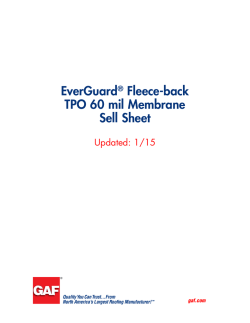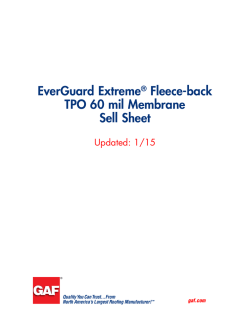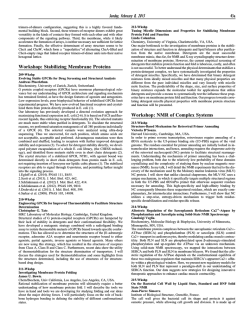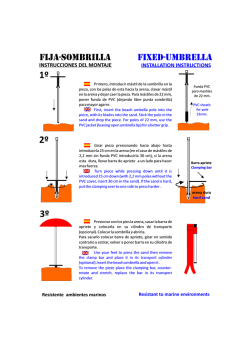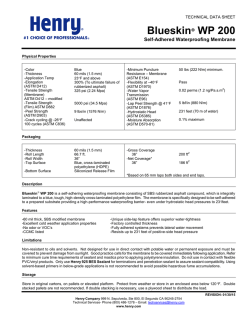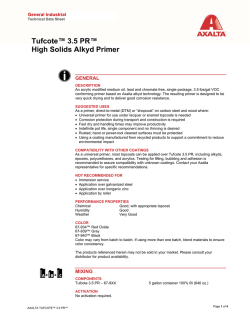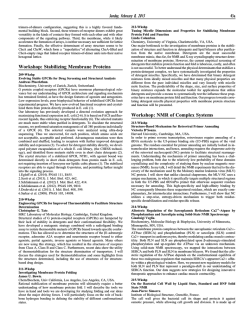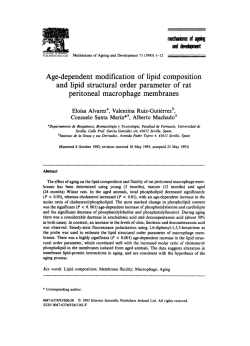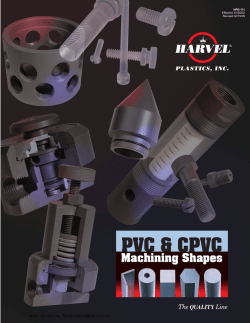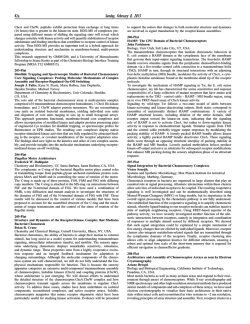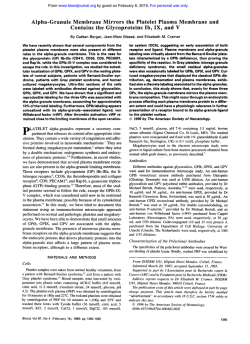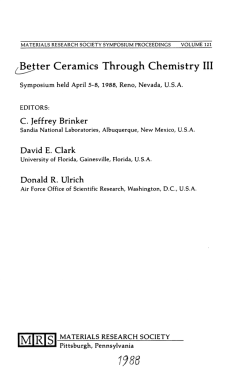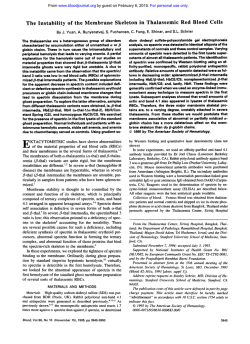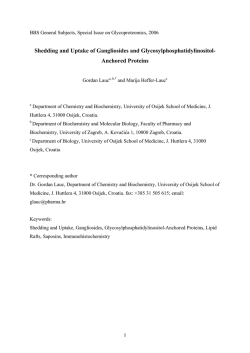
INTRODUCTION Single-ply roofing has grown significantly
INTRODUCTION Single-ply roofing has grown significantly since the introduction of ethylene propylene diene monomer (EPDM) in the early 1960s. With the later additions of polyvinyl chloride (PVC) and thermoplastic polyolefin (TPO), the single-ply market has now grown to over 2 billion sq. ft. annually, of which thermoplastics represent over 70%. Multi-ply systems (built-up roofing [BUR] and modified bitumen [mod-bit]) continue to play a role and have a number of advantages for certain situations. With their narrower and shorter rolls, multi-ply systems can be applied to smaller roofs or those roofs with many penetrations. Single-ply membranes do not have the advantages of a hard exterior surface or redundant layers, which are normally inherent in multi-ply systems. These membranes are smooth and do not have granule or sand finishes. Therefore, single plies can be perceived as being less resistant to puncture by sharp objects. To allay such fears, one com- pany has developed a small demonstration to show that its membrane is “punctureresistant.” This paper discusses what is meant by puncture resistance and compares the performance of various types of weldable single-ply membranes. PUNCTURE RESISTANCE The term “puncture resistance” is sometimes used fairly loosely and can be interpreted several ways, such as resistance to Figure 1 – Clamping of a specimen in the ASTM D4833 Puncture Test. Before and during penetration shown at left and right, respectively. 22 • Interface January 2015 sharp vs. blunt objects, fast vs. slow impact, etc. However, as will be shown later, there is a significant difference between a sharp, pointed tool such as a heavy screwdriver falling from 5 or 6 ft., point down, versus a sharp piece of gravel being pushed into a membrane surface by someone slowly stepping on it. Plastic materials such as PVC and TPO membranes behave quite differently when impacted at high versus low speeds. During installation, punctures occur most frequently due to falling sharp objects such as screwdrivers and from workers stepping onto sharp objects such as stones. Once installed and completed, membranes can still be punctured in the same ways if people are accessing the roof to repair equipment (e.g., air conditioners). Hail involves impact at high speeds, but with a large-diameter, fairly blunt projectile. In this study, we examined puncture resistance using objects that were pointed. Therefore, this work does not apply to hail resistance. force required to break the top membrane layer such that the scrim was exposed. The data are shown graphically in Figure 3. The TPO membranes shown represent all major manufactur ers. The 45-, 60-, and 80-mil (1.1-, 1.5-, and 2.0-mm) TPO s a m p l e s showed a pro- Figure 2 – Probe used in the ASTM D4833 puncture test. gressive increase in resistance with thickness. While lbf. The 36-mil (0.9-mm) PVC, made with a the scrim provides much of the resis- far denser scrim, is stronger, showing the tance, polymer thickness also contributes importance of scrim in a low-speed test of to strength. The smooth 60-mil (1.5-mm) unsupported material. It clearly supports membranes are all very comparable, with the view that physical strength of the scrim an average maximum puncture load of is more important than that of the polymer 132 lbf. The fleece-backed sample is nota- layers. bly more resistant. The 50-mil (1.3-mm) The supported membranes were all PVC samples show more variation among loose-laid, but note that the specimens were the three manufacturers tested, but their constrained by the device clamp (Figure 1). average maximum puncture load was 154 An evaluation of different fastening methods LOW-SPEED IMPACT TESTING An example of a low-impact speed test is ASTM D4833, Standard Test Method for Index Puncture Resistance of Geomembranes and Related Products. The test material is constrained around the edges of a 1.77in. (45-mm) diameter circle, as shown in Figure 1. A probe, shown in Figure 2, is pushed into the center at a rate of 12 in./minute. It is important to recognize that the membrane sample—even though it is constrained around the perimeter—is frequently tested without support. Therefore, the relationship to real-world performance is not clear, although many suppliers publish puncture-resistance data using ASTM D4833. In this work, we included the effect of backing the membrane with some common roofing substrates. A range of commercial membranes and substrates were collected and tested. Sample fail- Figure 3 – Penetration resistance of thermoplastic roofing membranes and systems, tested using ASTM D4833 ure was defined as the and shown as the maximum pound force (lbf) required to penetrate through the membrane. January 2015 Interface • 23 Figure 4 – Left: impactor specified in ASTM D4226; right: modified impactor with Phillips #2 screwdriver tip. was beyond the scope of this work. However, it is believed that both solvent- and water-based adhesives are too thin to provide for any mechanical resistance. The TPO sample, tested over regular 2-in. isocyanurate (iso) insulation (ASTM C1289, Type II, Class 1), is essentially identical to the same sample unsupported. However, the high-density iso cover board (ASTM C1289, Type II, Class 4) improved on that performance, and the gypsum board improved even more so. This suggests that, at least in the case of slow-speed penetration with a pointed object, cover boards do provide some increased resistance to low-speed puncture. Also, the higher the compressive strength, the higher the puncture resistance will be. HIGH-SPEED IMPACT TESTING As stated at the beginning of this article, it is a falling pointed object, such as a screwdriver, that frequently punctures membranes during installation, necessitating a repair. Also, during the installation of mechanical equipment, access panels and other objects with sharp corners and edges occasionally get dropped. For this work, the Figure 5 – Impact-resistance setup. Left: setup for unsupported membranes; right: setup for supported membranes. 24 • Interface January 2015 standard test method for impact resistance of rigid PVC building products (ASTM D4226) was modified, where the impactor had a Phillips #2 screwdriver head instead of the regular dome-shaped surface (Figure 4). The impactor was placed on the membrane, and a tube of a certain known weight was dropped on the impactor (Figure 5). The energy required to puncture the membrane was calculated from the weight of the tube and the height from which the tube was dropped. All the values reported are for complete puncture—i.e., puncture through the cap, scrim, and core. The samples Figure 6 – Drop impact resistance of thermoplastic roof membranes; impact energy, kJ, required for penetration were tested, both sup- using the Phillips screwdriver tip. www. rci-e-learning.org Roof Drainage Design Roof System Thermal and Moisture Design Roofing Basics Roofing Technology and Science I Roofing Technology and Science II Rooftop Quality Assurance Wind Design for Low-Slope Roofs - Part I: Understanding ASCE 7-05 Wind Load Calculations for Members Wind Design for Low-Slope Roofs - Part I: Understanding ASCE 7-10 Wind Load Calculations At your own pace, on your own time, at your fingertips ... January 2015 Wind Design for Low-Slope Roofs - Part II: FM Global Guidelines and Best Practice Considerations Online Educational Programs Interface • 25 ported and unsupported. For the unsupported samples, a support base, which was a hollow cylinder with an internal diameter of 0.64 in., was used. For samples with backing substrates, the supporting base was removed. Figure 6 shows the impact energy required to penetrate the samples using the Phillips #2 tip. For the TPO membranes, the data clearly indicate that thicker membranes have substantially more puncture resistance. As with the slow-impact speed test, very little difference exists among membranes of the same thickness from various manufacturers. The drop impact results show that compared with unsupported membrane, iso insulation does offer about a 14% improvement, while high-density iso cover board gives a 50% improvement, both for 60-mil TPOs. Gypsum cover board provides a substantial 100% improvement versus unsupported membrane. In contrast to the slow-speed data, the high-speed results show that the 50-mil PVC samples are less puncture-resistant than 45-mil TPO. Particularly surprising is the poor result for the 36-mil PVC sample. This suggests that the dense scrim used in that membrane does not contribute to resistance to a falling sharp object versus a standard scrim. By comparing the membrane results, it appears that the overall thickness is critical. As with the TPO results, supported PVC is significantly more punctureresistant. However, the impact energy at failure is lower than for TPO. This is not surprising, given the softer, more flexible nature of PVC membranes. 26 • Interface CONCLUSIONS 1. Membranes can be punctured both by high-speed impact with sharp objects (such as a falling screwdriver) or low-speed penetration (such as stepping slowly onto a sharp object resting on the surface of the membrane). a. A membrane that performs well from a low-speed impact does not necessarily do well in a highspeed impact. 2. At low-speed impact, PVC membranes perform slightly better than TPO, but likely not well enough to make a marked difference in repair effort needed during membrane installation. 3. At high speed, similar to a falling screwdriver, TPO does outperform PVC. a. More rigid backing, such as gypsum or high-density iso boards, significantly improves resistance to falling sharp objects. b. Thicker membranes give significantly higher puncture resistance. 4. Low-speed, hand-held demonstrations purporting to show high puncture resistance can be misleading. A membrane that appears to perform well in a marketing test may perform poorly in an approved test method using high-speed impact. Sarang Bhawalkar is a senior research associate in the Single-Ply Commercial Roofing Systems group at GAF. Bhawalkar has worked with GAF over the past year and is responsible for single-ply Sarang Bhawalkar roofing new product and technology development. Prior to joining GAF, he worked as a product development scientist at Avery Dennison, developing specialty functional labels. Bhawalkar graduated with a PhD in polymer science from the University of Akron, OH. His interests and specialties include polymeric materials, coatings, and nanotechnology. Tom Taylor is the executive director of building science for GAF. This position is focused on commercial roofing system development. Taylor has over 20 years’ experience in the building products Tom Taylor industry, all working for manufacturing organizations. He received his PhD in chemistry from the University of Salford, England, and holds approximately 35 patents. His main focus at GAF is TPO and iso foam development, as well as all the associated accessories and adhesives. January 2015
© Copyright 2026
